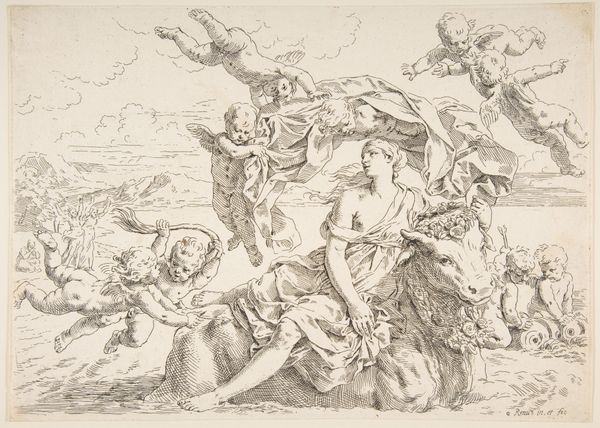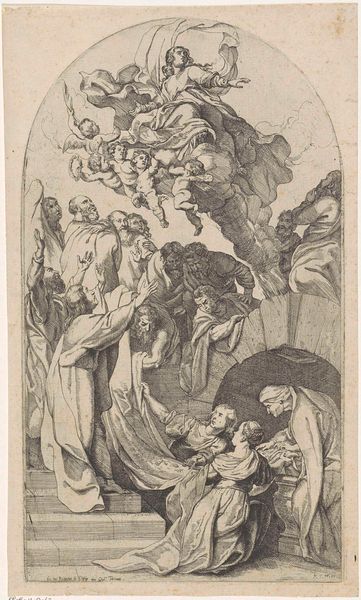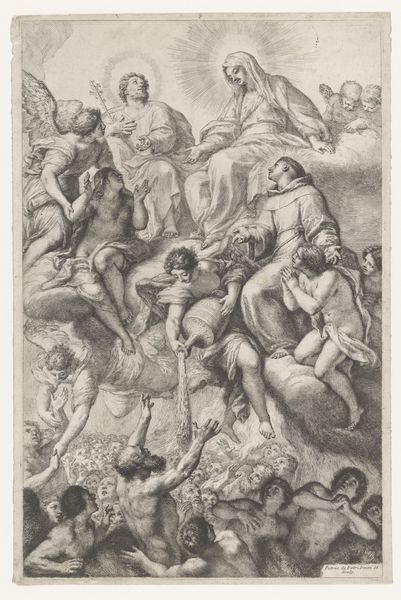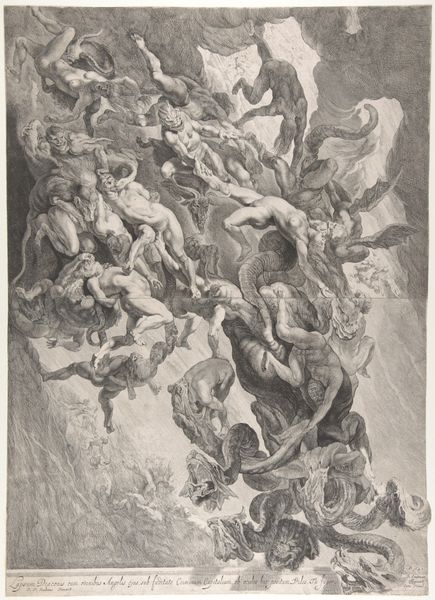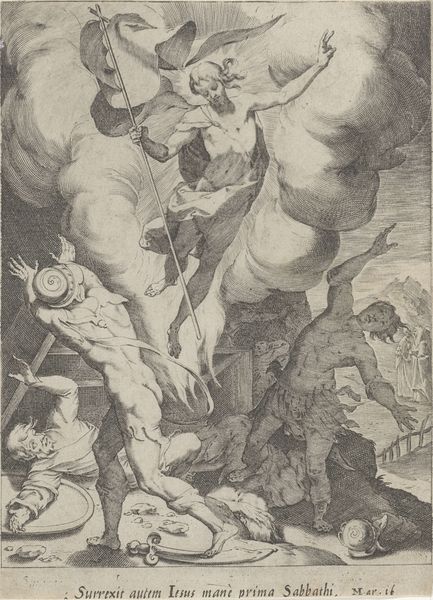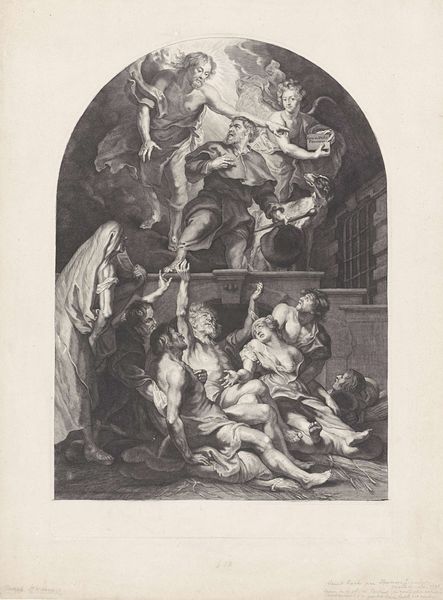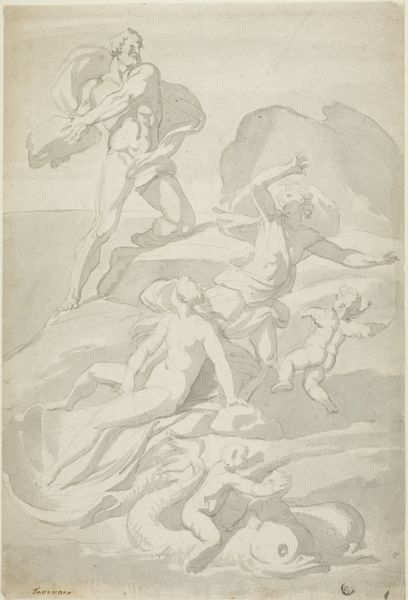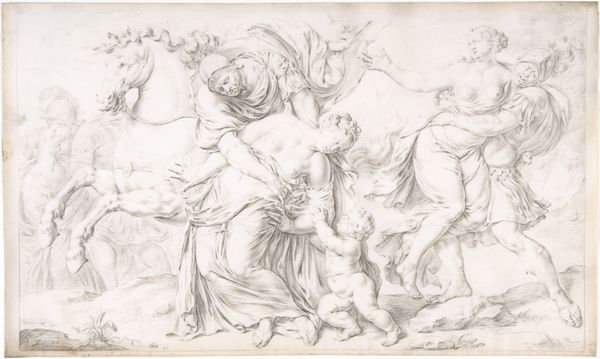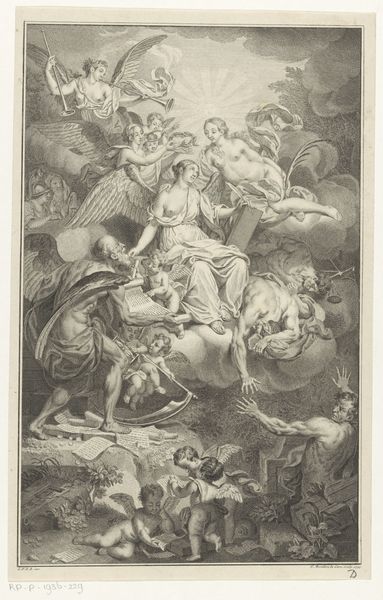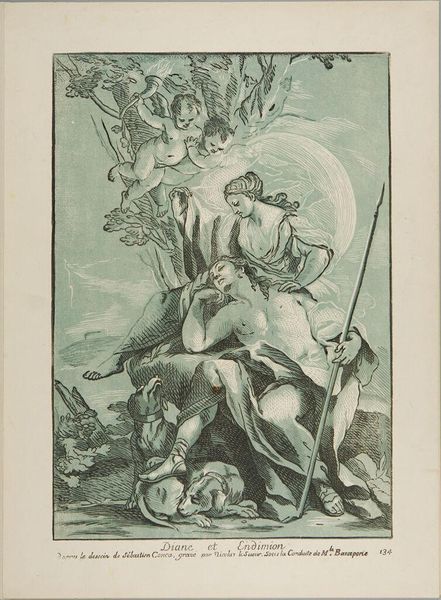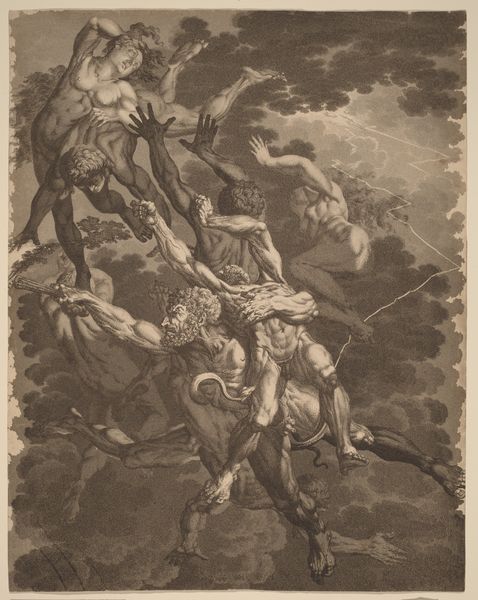
drawing, ink
#
drawing
#
allegory
#
baroque
#
figuration
#
ink
Dimensions: height 400 mm, width 320 mm
Copyright: Rijks Museum: Open Domain
Giovanni Battista Vanni rendered this etching of the Assumption of Mary in the 17th century, a common scene in the Catholic world. The motif of upward movement, carried by angels, signals a divine ascent. We see the continuation of the pagan imagery of winged figures, much like the Greek god Hermes escorting souls to the afterlife. These figures, transformed into angels, now lift the Virgin towards the celestial realm, a symbol of the soul's journey to salvation. The raised index finger, seen pointing towards the heavens, reappears throughout art history, from religious paintings to Renaissance portraiture. This gesture signifies divine inspiration, a connection to higher knowledge. The swirling clouds evoke an emotional state, drawing us into the fervor of religious experience. Such a composition can be found in antiquity as well, expressing both movement and the sublime. The symbols evolve, adapting to different cultural narratives, yet their emotional and psychological impact remains potent. The viewer is engaged by a powerful, shared subconscious experience, uniting the earthly and the divine.
Comments
No comments
Be the first to comment and join the conversation on the ultimate creative platform.
